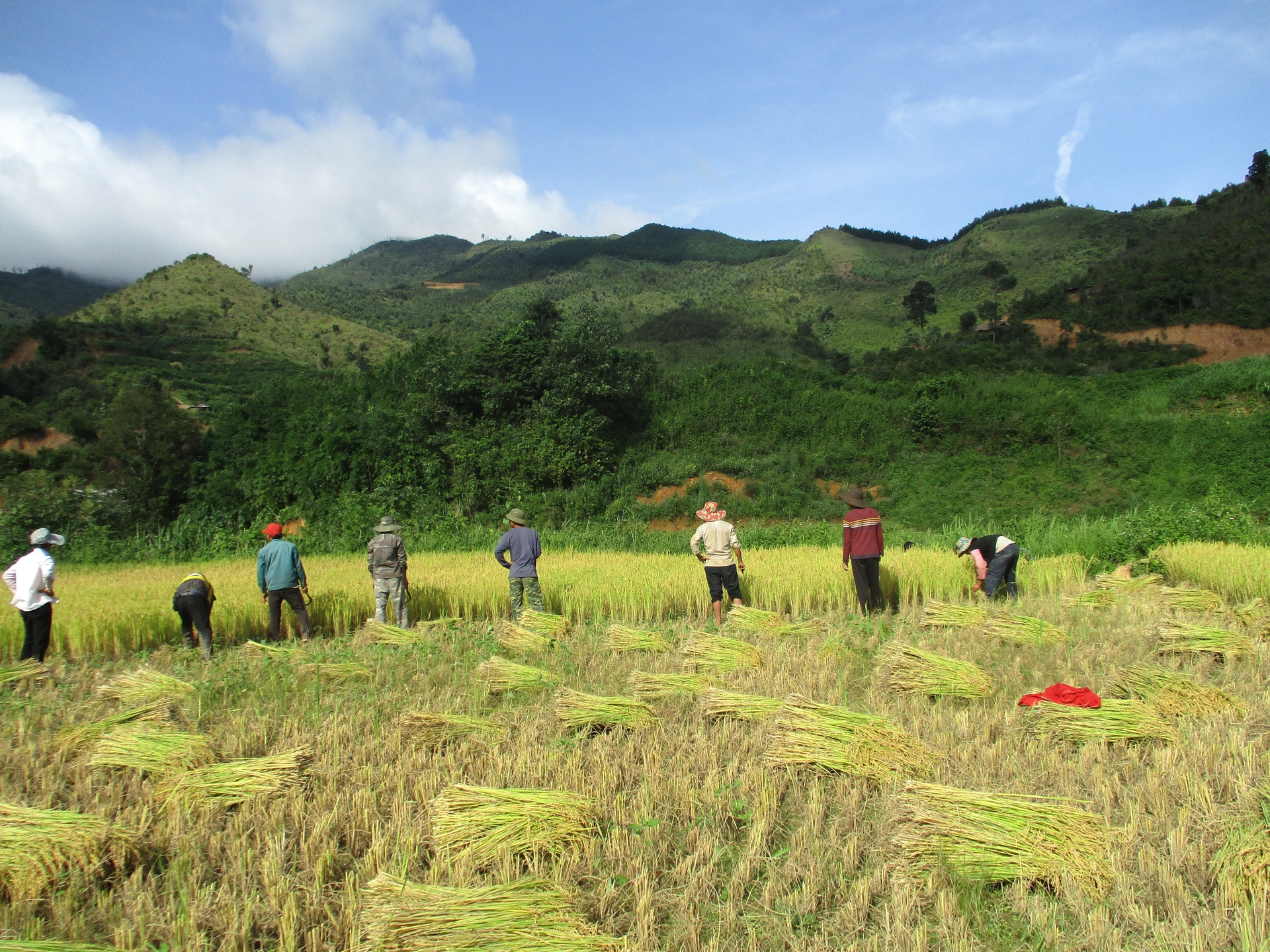
People are exchanging labour – meaning if I help them today, they will work for me on another day. Today the wet rice of Mr. Hịa is being harvested. His land is about 1,500 square metres, and 15–16 people are harvesting and packing rice into 25 bags. They can do this in three hours. First, the rice is cut by hand with sickles, and then it is threshed with a machine.
In Xam Ta village, every household cultivates both wet and upland rice. There is a shortage of water for wet rice. In the past, we only planted upland rice. In 2015, we started to grow wet rice after a study tour in a Thai village. We plant wet rice on lower land, where the water source is close. The yield of wet rice is higher (than upland rice), and weeding is not required because the water prevents grass from growing. On 1,000 square metres of land, farmers can only get 7–10 bags of upland rice, while the yield of wet rice is 20 bags over the same area. Previously, when the rice supply was not enough, we had to eat cassava roots and “mèn mén” made from corn flour. Since the introduction of wet rice, few households cultivate upland rice. Wet rice farming is less labour intensive. The labour costs for upland rice are three times that of wet rice, while the latter produces three times the output. However, wet rice farming needs more fertiliser and pesticides. Without pesticide spraying, there is nothing to be harvested from wet rice. It is possible to turn away from pesticides in upland rice farming. We can cultivate upland rice on a plot for two years only, after that we have to find a new piece of forest glade, burn the trees and form a new field. After 7–10 years, we will return to the former field.
Narrator: Sồng A Tráng (Hmong, 23 years old)
Photographer: Sồng A Lư (Hmong, 21 years old)